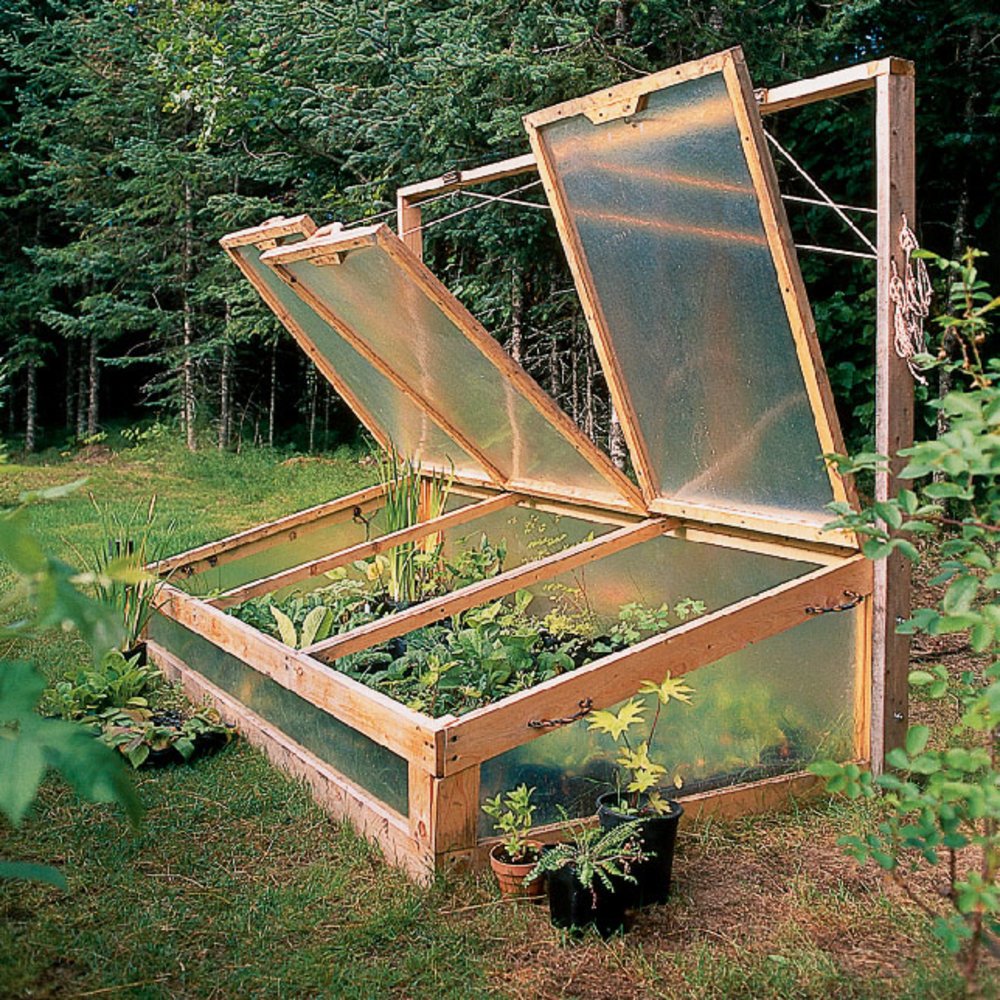
Best Cold Frame Plans for Home Gardening
A cold frame is a simple and effective tool for extending your gardening season. It essentially acts as a mini-greenhouse, providing a protected environment for seedlings, young plants, and even vegetables during the colder months. By trapping solar heat and shielding your plants from harsh weather conditions, a cold frame can give your garden a head start and help you harvest fresh produce longer. Whether you're a seasoned gardener or just starting out, building your own cold frame is a rewarding project that will enhance your gardening experience.
Choosing the right cold frame plan is crucial for ensuring it meets your needs and fits your garden space. There are many different designs available, from simple DIY structures to more elaborate options. To help you navigate the options, we've curated a list of the best cold frame plans for home gardening, each offering unique features and benefits.
Types of Cold Frames
Before diving into specific plans, it's helpful to understand the different types of cold frames available. This will allow you to choose one that aligns with your space, budget, and gardening goals.
Traditional Cold Frames
These classic cold frames typically consist of a wooden frame with a glass or polycarbonate lid. They are often freestanding and offer excellent insulation, making them ideal for colder climates. While they can be a bit more expensive and time-consuming to build, they offer excellent durability and performance.
Raised Bed Cold Frames
These cold frames are integrated with a raised bed, providing a convenient and space-efficient solution. They are often made from wood, concrete blocks, or recycled materials. This type of cold frame is particularly suitable for smaller gardens or those with limited space.
Lean-To Cold Frames
Lean-to cold frames are attached to an existing wall or fence, maximizing space utilization. They are usually simple to build and can be made from various materials. This option is perfect for gardeners seeking a budget-friendly and space-saving solution.
Portable Cold Frames
Portable cold frames are designed for easy movement. They are often lightweight and made from materials like plastic or metal. This type of cold frame offers flexibility, allowing you to reposition it as needed to take advantage of the best sun exposure.
Best Cold Frame Plans for Home Gardeners
Now that you have a better understanding of the different types of cold frames, let's explore some of the best plans available for home gardeners. These plans are designed to be user-friendly, adaptable, and budget-conscious.
Simple Wood Frame Cold Frame
This classic design is straightforward to construct and provides excellent insulation. You'll need basic woodworking skills and materials like wood planks, screws, hinges, and a glass or polycarbonate lid. The plan includes detailed instructions and diagrams to guide you through the process. This cold frame is ideal for those who prefer a traditional, durable, and DIY-friendly option.
Raised Bed Cold Frame with Concrete Blocks
This plan utilizes readily available concrete blocks to create a sturdy and visually appealing raised bed cold frame. The design incorporates a simple wooden frame for the lid, offering flexibility in material choices. This plan is perfect for gardeners who want a compact, easy-to-build, and cost-effective cold frame.
Lean-To Cold Frame with Recycled Materials
This budget-friendly plan emphasizes sustainability by using recycled materials like pallets, windows, and plastic sheeting. You can customize the design based on the materials you have on hand. This plan is ideal for gardeners looking for a green and economical solution.
Portable Cold Frame from PVC Pipes
This innovative plan utilizes PVC pipes and plastic sheeting to create a lightweight and portable cold frame. The construction is quick and easy, making it a great option for gardeners who need to move their cold frame frequently. This design offers excellent flexibility and affordability.
Building Your Cold Frame
Once you've chosen your plan, it's time to gather your materials and start building. Here are some tips to ensure success:
Using Your Cold Frame
Now that your cold frame is ready, it's time to start using it. Here are some tips for maximizing its potential:
Conclusion
A cold frame is an excellent investment for any home gardener looking to extend their growing season. With careful planning and construction, you can build a sturdy and efficient cold frame that will enhance your gardening experience and help you enjoy fresh produce for longer. Whether you choose a classic design or a more innovative option, the benefits of a well-built cold frame are undeniable.








No comments:
Post a Comment